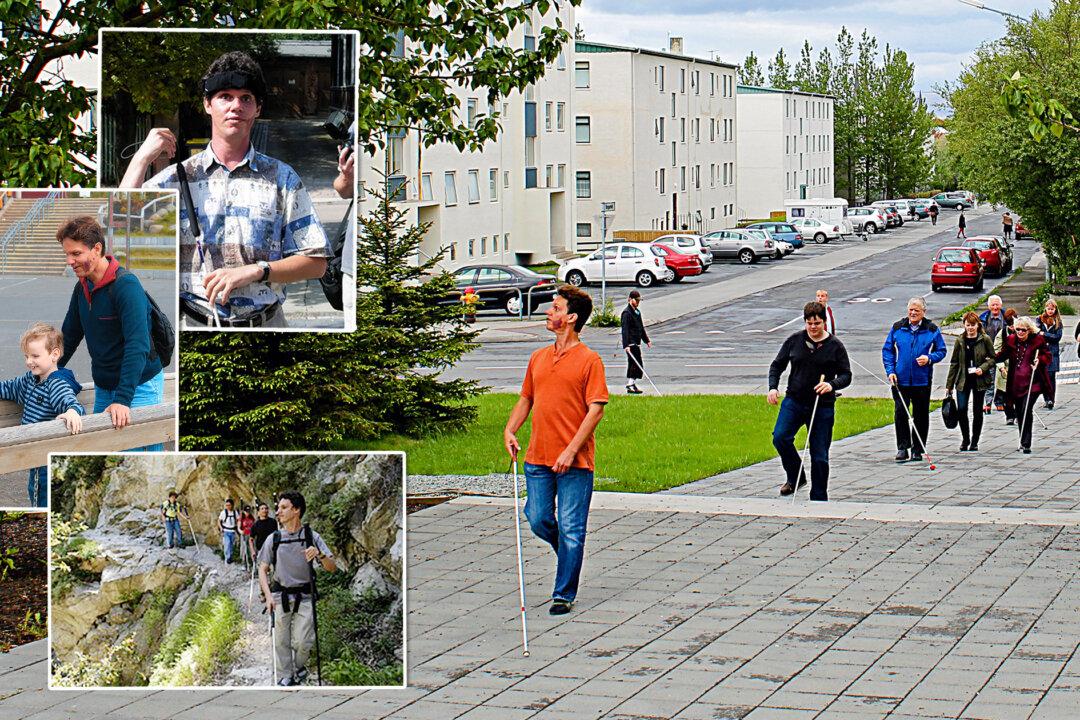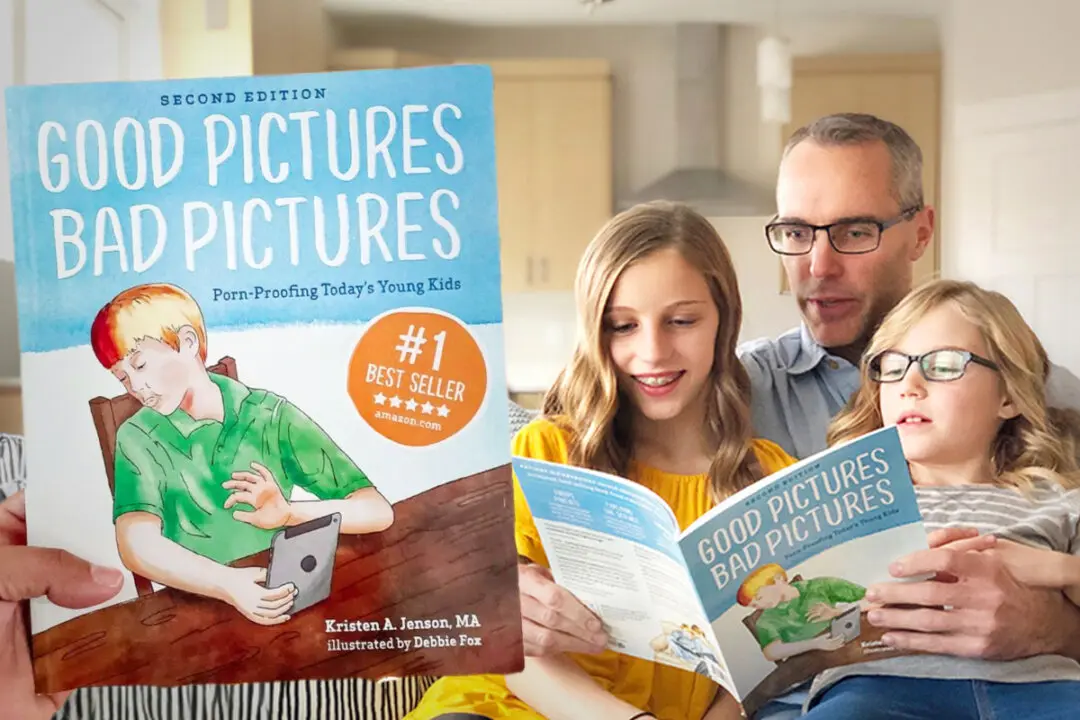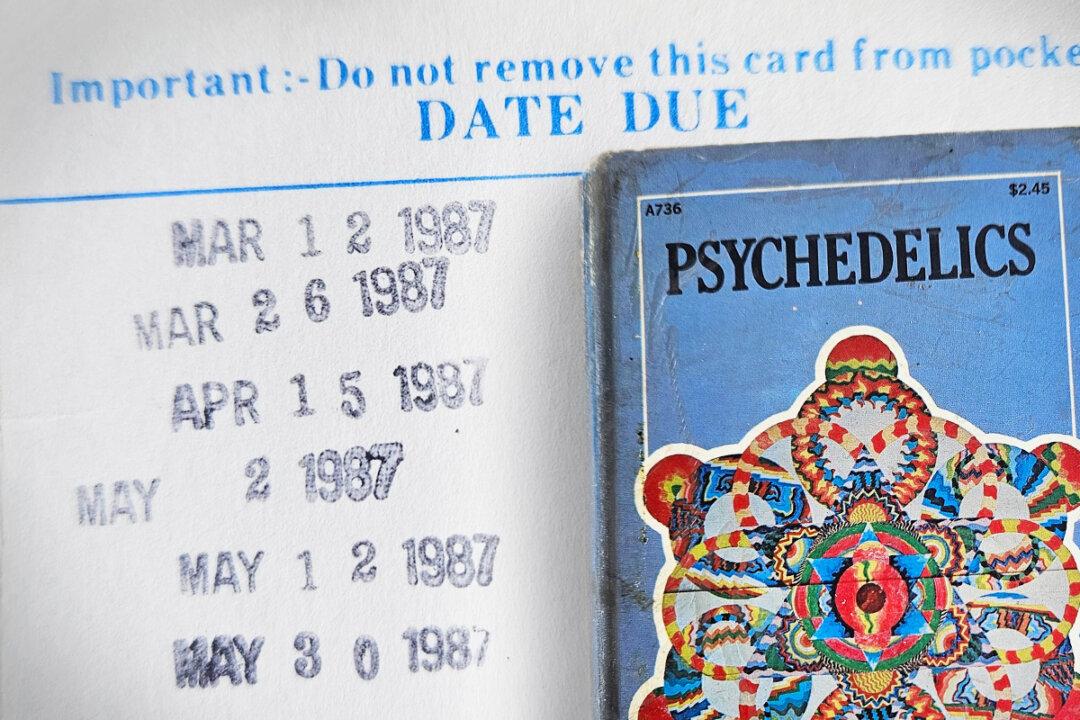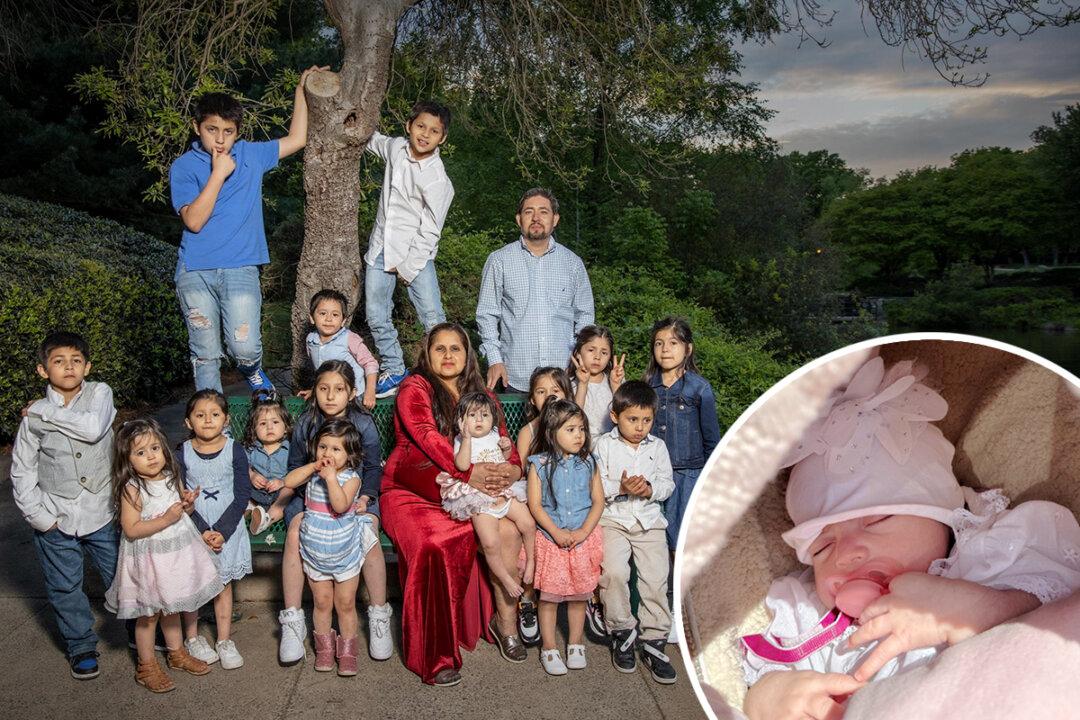Propelled by curiosity, Daniel Kish learned an amazing adaptation after losing both his eyes to cancer as an infant: echolocation. Now, at 57, he “sees” the world with his ears like a bat does, by making clicking noises with his tongue to create a mental map of the world around him from the reflected sound.
“I was not born blind. However, I was very likely born significantly visually impaired,” Kish told The Epoch Times. “My eyes were removed due to retinal tumors, a condition called retinoblastoma. ... My first eye was removed when I was 7 months old, and my second was when I was 13 months old.”
Interpreting the World
A learned form of echolocation allows Kish to identify buildings, trees, people, traffic, and any obstacles in his environment to an incredible degree of accuracy, including their size, form, and material. “It allows me to not only feel more secure as I learn a new space but also to map out that new space faster,” he said.
Today, Kish holds two master’s degrees, one in developmental psychology, and the other in special education. He is a certified orientation and mobility specialist, preferring the term “perceptual navigation specialist,” and works with the visually impaired, autistic, and anyone with a challenge to help them interpret the world as he does.
Kish lives in his own home in his native Southern California and has traveled to 41 different countries worldwide. For “all practical day-to-day purposes” he has mapped out most of north Orange County, and much of south Los Angeles County.

Kish remembers echolocating for the first time when he was 2 and a half years old.
“I was already exploring, I was already curious, and I was willing to strike off on my own,” he said. “I was encouraged to interact with the environment more and more on my own terms.”
One night, Kish was bored and had trouble sleeping. However, he couldn’t get out of his room since his parents had locked the door. But as Kish was inclined to roam, he climbed out his window and went into the backyard.
“Our backyard was surrounded by chain link fence, so one could easily ‘click’ through the fence and notice things on the other side,” he said, “so I climbed over the fence into the neighbor’s yard and started wandering around, clicking around and just basically exploring.”
Toddler Kish eventually found another fence and another yard and continued exploring. It wasn’t until entering the third yard that a neighbor spotted the curious tot and sent him safely home.
Mainstreaming

In response to being asked what it was like growing up without sight, Kish posed the question back, “What was it like growing up able to see?”
“You would struggle [to answer] that,” he said. “I think in a lot of ways, there are more commonalities than differences. I think that any child growing up with any kind of condition, the key drive is really just to kick it off, figure out ... how to interact with the world, how the world impacts you, how you respond to those impacts.”
Kish’s parents raised him to believe that he was entitled to the same freedoms and responsibilities as anyone else. They knew that he would need to be strong and resourceful. Luckily, California was one of the very few states at the time that made inclusion possible for blind children.
“I was mainstreamed,” Kish said. “In fact, in those days, 90 percent or more of blind children would have been sent to schools for the blind.”
Although Kish didn’t have a full-time aide or a full support worker, he had teachers who knew Braille. Thus he followed a dual curriculum and did the same work that the sighted kids were doing, but the only difference was that it was translated into Braille.

When Kish completed the fourth grade, his parents worked with their local school district to open a Braille program, and he soared. He was able to walk to school by himself, made new friends, and found that he excelled at sports and activities like tree climbing, with his keen sense of spatial awareness.
Kish was also pretty strong and fast for his age and possessed really good coordination.
“That was pretty much core to my upbringing, running around with other kids,” he said. “My friends certainly knew I was blind, and they knew that certain considerations were warranted, but at the same time my friends were pretty open to my participating.”
Kish played ball games and developed a love for hiking. He even learned to ride a bicycle and had been able to build his balance. He said: “It wasn’t so much about falling for me, it was about not crashing.”
He also co-ran a mountain biking team, using a combination of echolocation and sighted riders with noisemakers on their bicycles. In order to know the path they were traveling, they followed the sighted riders.
Kish also began hiking alone and has taken part in group hiking excursions in Switzerland, Scotland, and South Africa.

Self-Determination
Kish is able to find his way through different means comfortably and securely. So when he spends time in places he doesn’t know he tries to adapt to them quickly.“I have a support system,” he said. “I call it the ACT framework, so it’s about adaptation, capacities, and technology as support.”
The adaptations involve things that one can do or things that others can do such as tactile strips that are along some curved edges and some railroad platform edges. These help to warn blind people that they’re about to enter a space that could be compromising.
Additionally, there are capacities such as a sense of balance, physical strength, physical health, and physical coordination.
“For me, echolocation serves as a significant percentage in the capacity department,” he said. “Then technology; there are a whole range of technologies that also can make life easier, especially nowadays. I was given a Braille compass, a tactile compass when I was 10 years old, for my birthday, and that stayed with me for decades.”

For Kish, his “claim to fame” is less his own ability, and more his ability to help and tutor others. He became the first totally blind person on record to earn certification as an orientation and mobility specialist in 1986, and now teaches echolocation, what he calls “flash sonar,” through his nonprofit foundation, World Access for the Blind.
“I don’t tend to use the term ‘independence,’” Kish said; “I tend to use the term ’self-determined,' because it’s really about having the wherewithal and resources to make our own choices and to act on our own choices.”
For Kish, the most exciting part is when someone’s ability to go out and do their own “shopping.”
Echolocation in humans has become a popular topic of research, Kish said, including at Durham University, Johns Hopkins, and the University of Munich in Germany. He has worked with these universities as a consultant, as well as doing regular public speaking, teaching, and authoring books.

Recently Kish worked intensively with a visually-impaired 6-year-old and their family while staying at their home. He has also worked with 9-year-old twins and stayed with their family in the past.
Kish emphasizes that the skills he uses don’t necessarily replace vision.
“A blind person will require and/or prefer some sighted support at certain times, for certain things,” he said. “The skills I teach help to restore agency and preserve self-determination in blind individuals so that blindness in and of itself need not limit what one can achieve.
“Of course, proficiency in echolocation and other blindness skills helps to close the perceptual and functional gaps that many blind people may find challenging.”

For Kish, sharing his skills is paramount.
“It was always about facilitating learning,” he said. “I have zero desire to be the only one able to do anything.”




